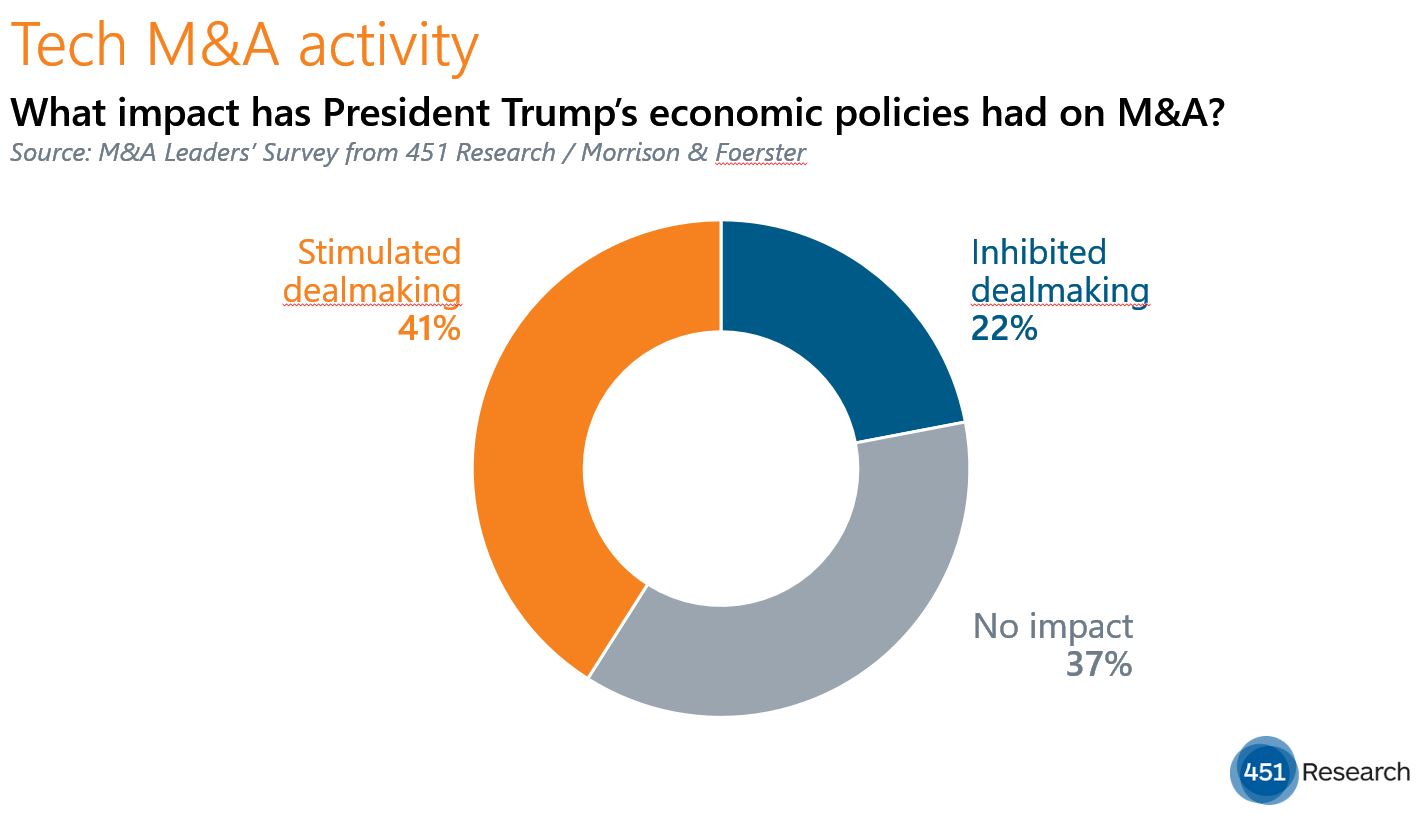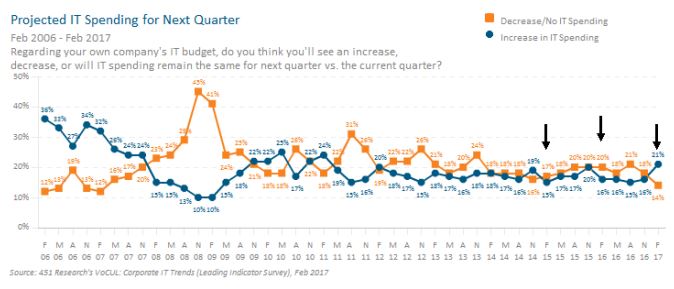Contact: Brenon Daly
If tech M&A was stumbling in the first three months of the year, it face-planted in April. Spending on tech deals announced around the globe in the just-completed month slumped to just $12.9bn, the lowest monthly total since the start of 2015, according to 451 Research’s M&A KnowledgeBase. The paltry value of April’s tech transactions works out to just half the average amount spent in each of opening three months of this year.
Spending last month came in light largely because dealmakers didn’t buy big, announcing just three transactions valued at more than $1bn, according to the M&A KnowledgeBase. That’s less than half the monthly average of eight ‘three-comma’ deals over the past 12 months. And even the big prints that did get done in April were relatively small. Last month’s largest transaction (the $2.3bn KKR-led acquisition of Hitachi Kokusai Electric) barely squeaked into the top 10 of the biggest deals of 2017, landing at number eight on our M&A KnowledgeBase list.
Acquirers didn’t just put off big-ticket purchases in April – in many cases they didn’t buy at all. According to the M&A KnowledgeBase, deal volume in April sank to its lowest monthly level in three years. Tech shoppers announced just 258 transactions last month. April’s weak deal volume and spending put overall 2017 M&A activity well behind recent years. In fact, through the first four months of this year, both measures are lining up fairly closely with the pre-boom year of 2013.






